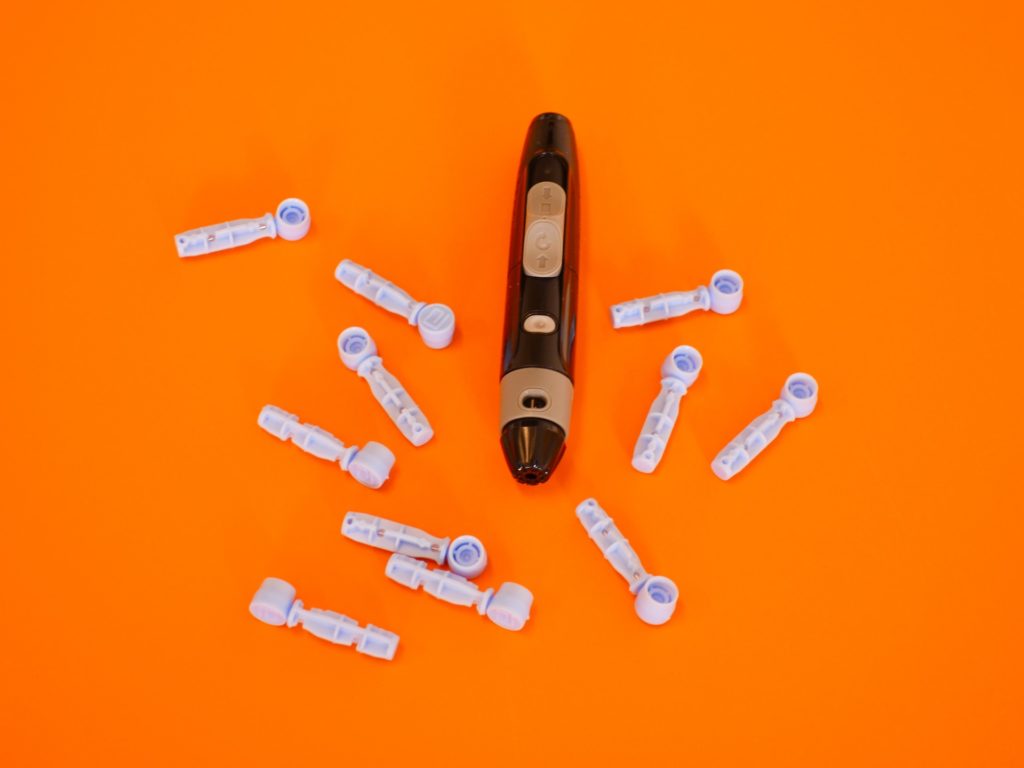
For those living with diabetes, checking their blood glucose levels is a vital part of their daily routine. This measurement indicates how much glucose, or sugar, is in the blood. These levels can fluctuate throughout the day and depend on the types of food and drink you consume, and for those with diabetes, the changes can be drastic.
If you need advice and guidance on monitoring your blood glucose levels, we can help. At Home Health UK, we are a team of medical professionals offering diabetes management tools in our online pharmacy. We have also compiled a comprehensive guide to monitoring blood glucose levels to help you get started.
As we have mentioned, monitoring blood glucose levels is vital for those with diabetes. It is a method of recording blood sugar levels to administer the correct medication dosages. But what is the importance of this?
Some diabetic people rely on medications like insulin or sulphonylureas; the amount of these medications they take daily depends on their blood sugar levels. Getting this dosage wrong can prove fatal, so it is critical that you accurately and regularly test your blood glucose levels if advised by your doctor. Monitoring blood sugar levels also indicates whether you need to eat more or get up and move around.
Suppose your blood glucose levels are too low. In that case, this is known as hypoglycaemia, and the reverse, if your levels are too high, is known as hyperglycaemia. Regularly recording your readings lets you get to know your body, what it needs, and do your best to take care of it. serious complications can arise when you don’t use your blood glucose readings to make positive changes, affecting areas of the body like your eyes and feet. This is because increased blood sugar limits blood circulation in your body, leaving some parts cut off from blood flow.
Another important aspect of blood glucose monitoring is the recording of results which can be presented to your doctor if you suspect something is wrong. They can use your recordings to determine any changes or discrepancies that might aid them in a diagnosis.
Now that you know why you should regularly check your blood glucose levels, it’s time to learn how. Fortunately, the process is simple and made even easier with high-quality machines and test strips.
To accurately measure your blood glucose levels at home, you will need:
Your blood glucose monitor is the device that reads and displays the glucose levels in your blood. However, it is not the only piece of equipment you will need, but it is the first you should acquire. Many different blood glucose meters are available on the market, and new ones are designed and distributed constantly. Your GP may recommend one that suits your needs and is available with compatible test strips on prescription.
However, you may purchase your own if you find your blood glucose meter difficult to use or read. At Home Health UK, we have a wide selection of blood glucose monitors available from some of the best-respected brands in the industry.
If you’re unsure which blood glucose monitor to use or need more information or prescription availability, speak with your healthcare team for more advice. Alternatively, contact us today for more details and guidance on our products.
You must use a finger prick device to retrieve your blood sample for the glucose monitor to ensure safe and accurate results. This means having a quality lancing device and lancets to prick your finger as painlessly as possible and withdraw sufficient blood.
Lancets are single-use and inserted into the lancet device, which will trigger the needle into your finger according to your selected depth. Each lancet device is different, so you must take the time to read the instructions provided carefully and speak to your healthcare team for more advice if you’re unsure.
Once you have used your lancet device, simply remove the used lancet and discard it in an appropriate sharps bin.
Finally, you will need a number of diabetic test strips compatible with your blood glucose monitor device. Every monitor is different, so stocking up on test strips that fit into your device and can be read by the monitor is the most efficient.
The test strip is inserted into the blood glucose monitor according to the direction instructed. Then your blood sample is applied by holding your finger to the test strip after pricking. Results should be read and displayed for you to record almost instantaneously.
With equipment you feel comfortable using, follow these simple steps to use your blood glucose monitor effectively.
When it comes to aiming for particular blood glucose levels, there is a range considered to be healthy that you should strive for. This is typically between 3.9 mmol/L and 5.6 mmol/L. However, everyone is different, and you should speak to your GP to work out what a healthy blood glucose level looks like for your body.
We hope you have found the important and useful information you need to monitor your blood glucose levels. The steps we have listed are basic guidelines. If you require further advice, we recommend contacting your healthcare team for more guidance.
You can also shop our collection of high-quality diabetes management supplies available online at Home Health UK. You can find replacement lancets, test strips, new blood glucose monitors, and more in our range. For information on our products, contact us today to learn more.
Living With Diabetes: What You Need to Know
What Are Lancets? And How To Use Them